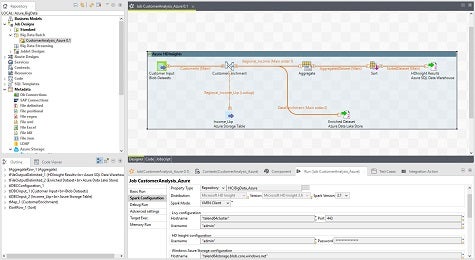Now that IT organizations are becoming more adept at managing deployments of applications across multiple clouds, it’s only a matter of time before requests to integrate those applications increase. To facilitate that process, Talend today announced it has extended the Talend Data Fabric for integrating applications to include support for Microsoft Azure and Google Cloud Platform, as well as a new Altus cloud service based on Hadoop that was unfurled last month by Cloudera and a relational database cloud service developed by Snowflake Computing.
In addition, the summer 2017 release of Talend includes machine learning algorithms running on an implementation of the Apache Spark in-memory computing platform that can be employed to automate and accelerate data matching and cleansing, in addition to improving scale, performance and accuracy. Ashley Stirrup, chief marketing officer for Talend, says over time those algorithms will observe and learn from decisions made by data curators to become more intelligent and accurate.
Stirrup says via the Summer 2017 release of Talend, which can be invoked as a cloud service or deployed on-premises, the company is now extending the reach of its data integration service hosted in the cloud to enable IT organizations to create data pipelines that span multiple types and classes of cloud services, including Amazon Web Services (AWS). Stirrup says Talend expects organizations to leverage the data pipeline it enables to provide a higher level of abstraction for applying both machine learning algorithms and advanced governance capabilities across multiple sets of data.
The Talend Data Fabric, says Stirrup, advances that goal by providing a means through which IT organizations can bake agility into their data integration strategies by extending the Talend service using a variety of connectors.
“There’s a lot more requests now for data,” says Stirrup. “The number of data sources organizations are now calling has increased.”
Most organizations today are still managing multiple clouds in isolation from one another. But the day when all the different clouds become a natural extension of the rest of the enterprise is coming soon. The time, however, to start planning for that new IT reality is now.



